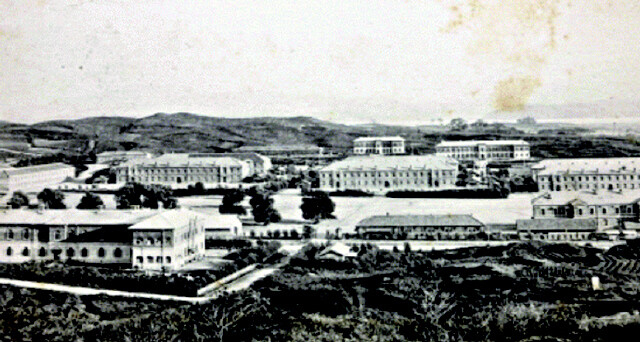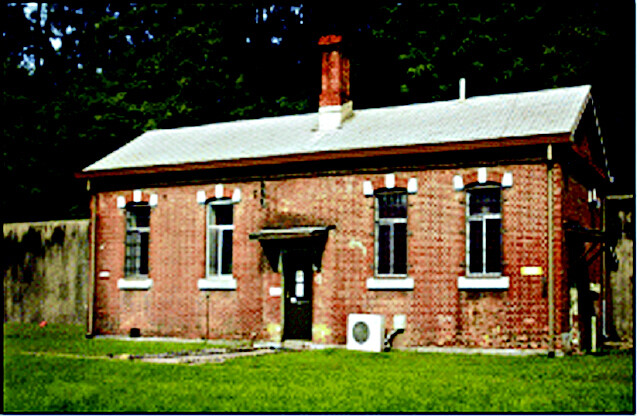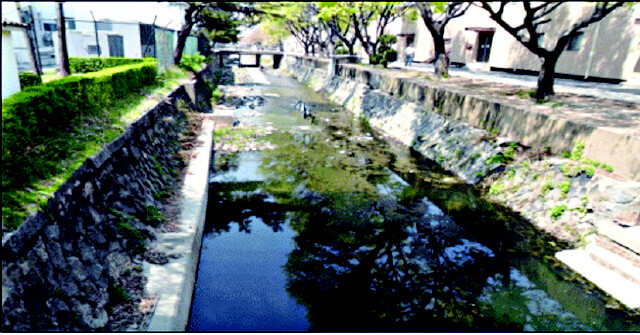hankyoreh
Links to other country sites 다른 나라 사이트 링크
Yongsan District opens base to civilians after 110 years

There is a plan underway to offer the general public regular opportunities to explore early modern historical sites that are located inside the US military base in the Yongsan District of Seoul - an area that has been off-limits to civilians for more than 110 years.
Historical and natural sites on the base have been so well preserved that the area has been called the “DMZ in downtown Seoul.”
The civilian tours of Yongsan Base are being spearheaded by Yongsan District government. On Apr. 6, the district announced that it had held a tour of historic sites on the base on Mar. 30 for 30 local residents.
While government officials and experts have already visited the base in preparation for the base’s relocation in 2016 and the site’s conversion into Yongsan Park, this was the first time that a group of local residents set foot inside.

After a number of discussions with USFK garrison about the tour, Yongsan District submitted an official request in mid-March to Col. Maria P. Eoff, commander of the Yongsan garrison, for “tours of historical sites inside the US base in order to understand the history of Yongsan.” Col. Eoff granted the district permission to enter the base on a temporary basis.
And then, from 10 am to noon on Mar. 30, about 30 Yongsan residents ranging in age from 30 to 70 attended a lecture in “Yongsan studies” held on the base, ending a ban that had lasted for 111 years.
During the Russo-Japanese War in early 1904, Korea was forced to sign an unfavorable treaty with Japan, and the next year Japan appropriated today’s Yongsan Base for the use of its army, only paying 890,000 won for the land. There was strong opposition from the residents of the base - which at the time contained 1,176 houses and 1,117,308 graves - but this was suppressed by Japanese military police.

While South Korea was liberated from Japanese control in 1945, the Yongsan Base paradoxically missed out on half a century of development, because of the US forces that moved in when the Japanese moved out.
Inside the base are a number of historical sites that have survived the passing years. One is the Southern Altar, the site of a harvest ritual during the Joseon Dynasty and a stop on the recent tour by Yongsan District residents. Another is Wisu Prison, built in 1908, which aside from Seodaemun Prison is the only prison that survives from the Japanese period. This is where Ahn Doo-hee was incarcerated after he assassinated Kim Koo (Kim [1876-1949] was a Korean independence movement leader and president of the Provisional Government; Ahn was an army lieutenant).
Other sites include officer quarters dating back to the Japanese occupation, buildings used by Soviet and Chinese forces during the Korean War, a 300-meter stretch of the Mancho stream (its original appearance can only be seen inside the base), Dunji Mountain and a cluster of zelkova trees that appear in photographs from around 1910.
The more than 100 buildings and bunkers on the base not only constitute a microcosm of more than a century of architectural styles and lifestyles, but also possess rare value in terms of world military history, experts say.

“There is nowhere else in Seoul that has preserved cultural relics to this degree,” said Kim Jong-cheon, a scholar of local history who led the historical tour for the district.
The most valuable cultural artifacts here, Kim believes, are the statues of civil servants formerly placed in front of graves, called “muninseok,” that are scattered around the area. These are vestiges of the people of Joseon who once lived here and were driven out, forced to leave behind the graves of their ancestors.
Yongsan District announced that it would offer tours of the US army base to residents on a regular basis.
“This is a globally significant place since it faithfully preserves the history of the Japanese occupation as well as modern history,” said Yongsan District Mayor Seong Jang-hyeon. “After the relocation of the base, we will do our best to restore our forgotten early modern history.”
Because of such values as these, the city of Seoul has been pushing to have Yongsan Park, which will be built around the Yongsan Base, registered as a UNESCO World Heritage site. This year, the city is planning to launch a fact-finding survey of cultural relics located inside the base.
By Im In-tack, staff reporter
Please direct questions or comments to [english@hani.co.kr]

Editorial・opinion
![[Guest essay] The real reason Korea’s new right wants to dub Rhee a founding father [Guest essay] The real reason Korea’s new right wants to dub Rhee a founding father](https://flexible.img.hani.co.kr/flexible/normal/500/300/imgdb/original/2024/0423/8317138574257878.jpg) [Guest essay] The real reason Korea’s new right wants to dub Rhee a founding father
[Guest essay] The real reason Korea’s new right wants to dub Rhee a founding father![[Column] ‘Choson’: Is it time we start referring to N. Korea in its own terms? [Column] ‘Choson’: Is it time we start referring to N. Korea in its own terms?](https://flexible.img.hani.co.kr/flexible/normal/500/300/imgdb/original/2024/0423/3617138579390322.jpg) [Column] ‘Choson’: Is it time we start referring to N. Korea in its own terms?
[Column] ‘Choson’: Is it time we start referring to N. Korea in its own terms?- [Editorial] Japan’s rewriting of history with Korea has gone too far
- [Column] The president’s questionable capacity for dialogue
- [Column] Are chaebol firms just pizza pies for families to divvy up as they please?
- [Column] Has Korea, too, crossed the Rubicon on China?
- [Correspondent’s column] In Japan’s alliance with US, echoes of its past alliances with UK
- [Editorial] Does Yoon think the Korean public is wrong?
- [Editorial] As it bolsters its alliance with US, Japan must be accountable for past
- [Guest essay] Amending the Constitution is Yoon’s key to leaving office in public’s good graces
Most viewed articles
- 1[Column] ‘Choson’: Is it time we start referring to N. Korea in its own terms?
- 2Opposition calls Yoon’s chief of staff appointment a ‘slap in the face’
- 3[Guest essay] The real reason Korea’s new right wants to dub Rhee a founding father
- 4Senior doctors cut hours, prepare to resign as government refuses to scrap medical reform plan
- 5Why Korea shouldn’t welcome Japan’s newly beefed up defense cooperation with US
- 6New AI-based translation tools make their way into everyday life in Korea
- 7[Editorial] Japan’s rewriting of history with Korea has gone too far
- 8Terry Anderson, AP reporter who informed world of massacre in Gwangju, dies at 76
- 9[Column] Has Korea, too, crossed the Rubicon on China?
- 10[Column] The clock is ticking for Korea’s first lady